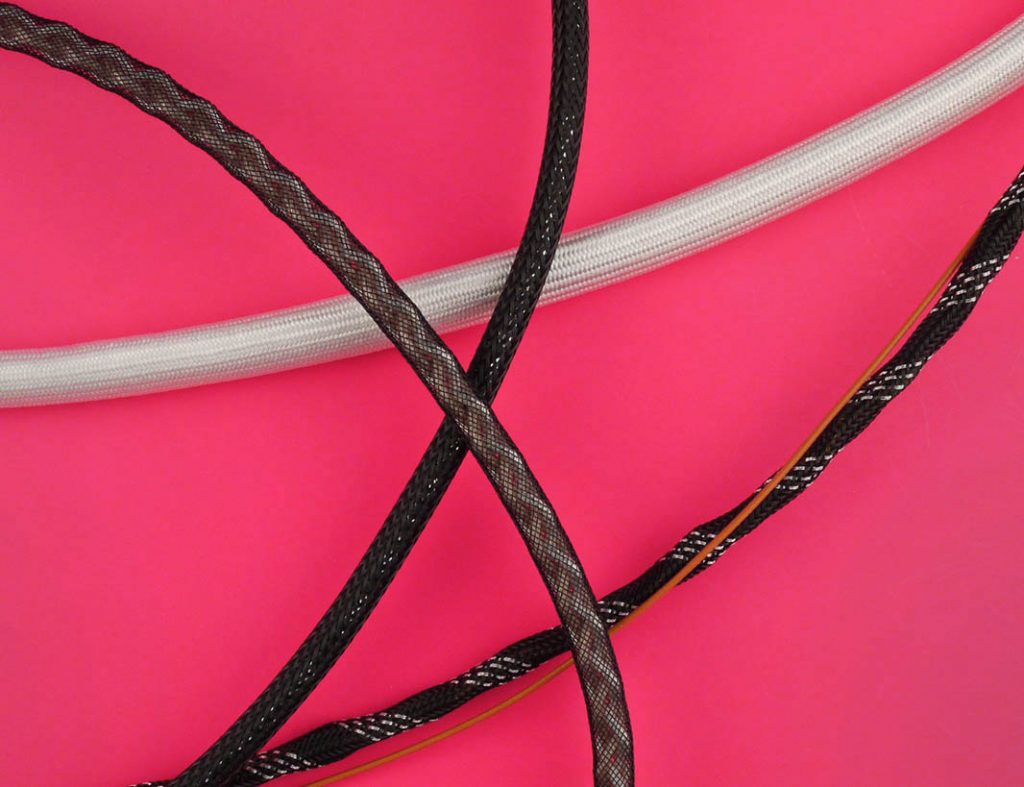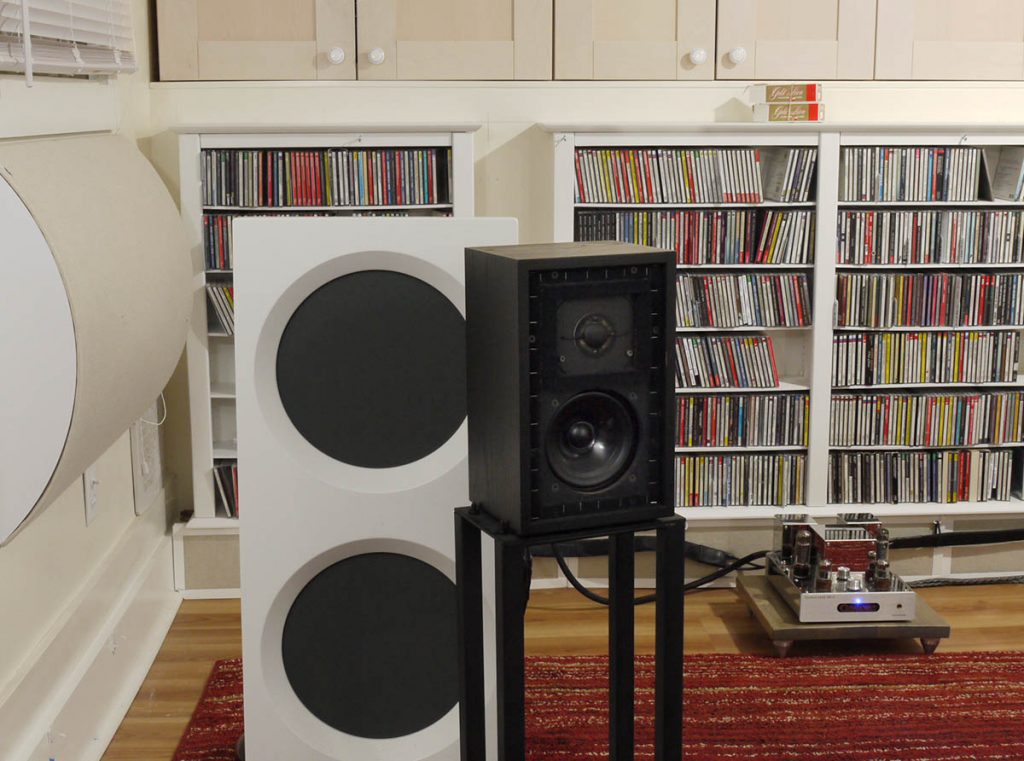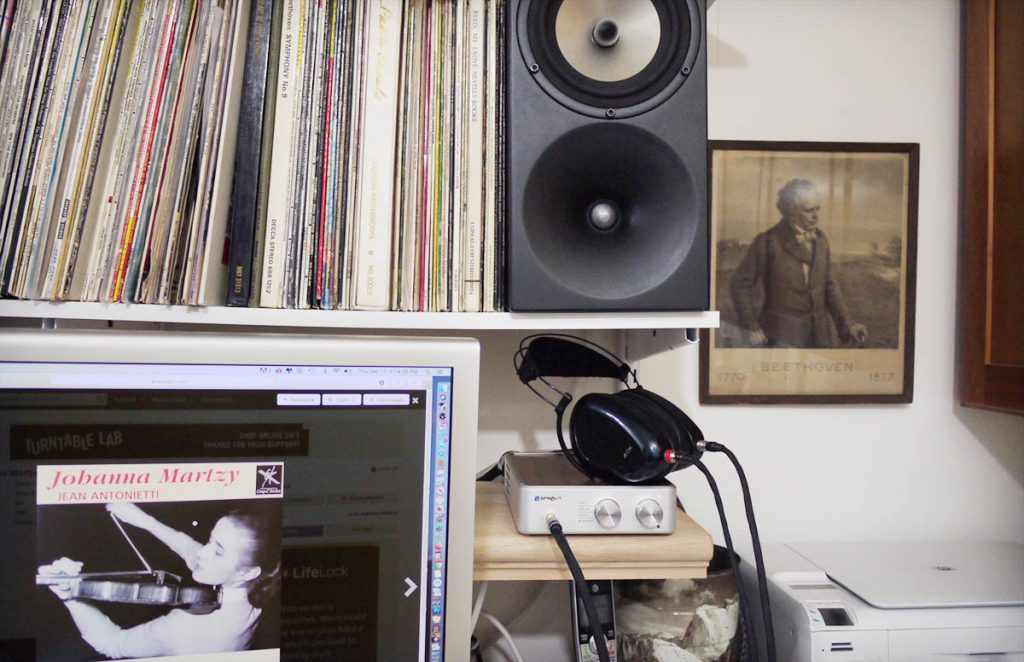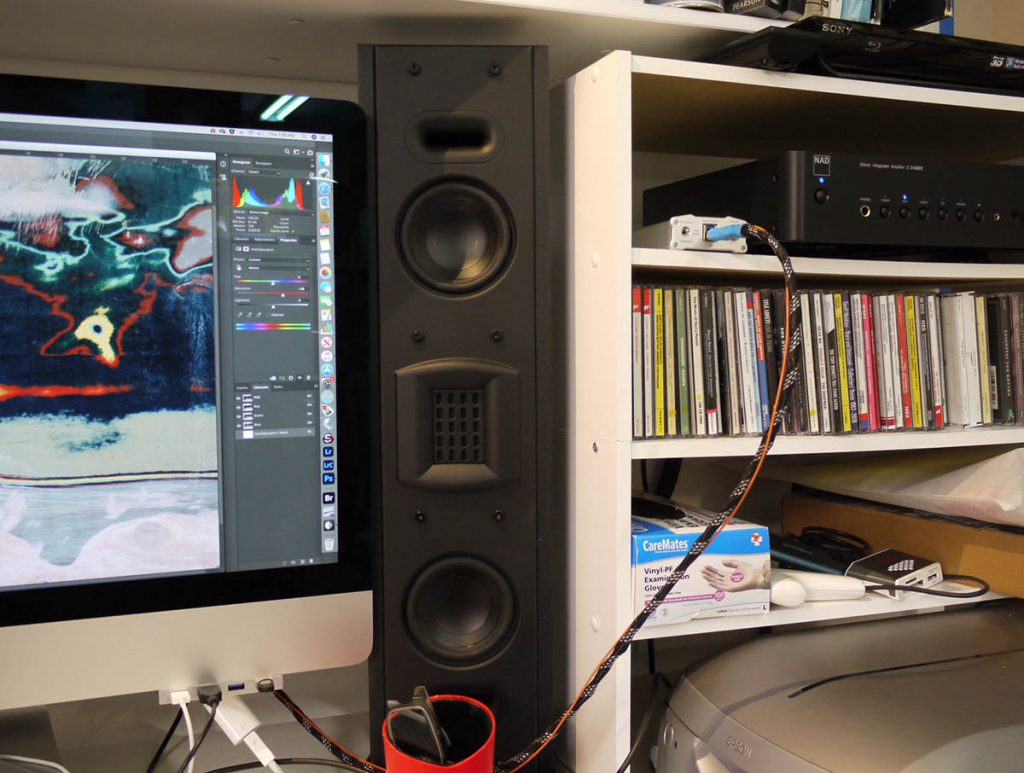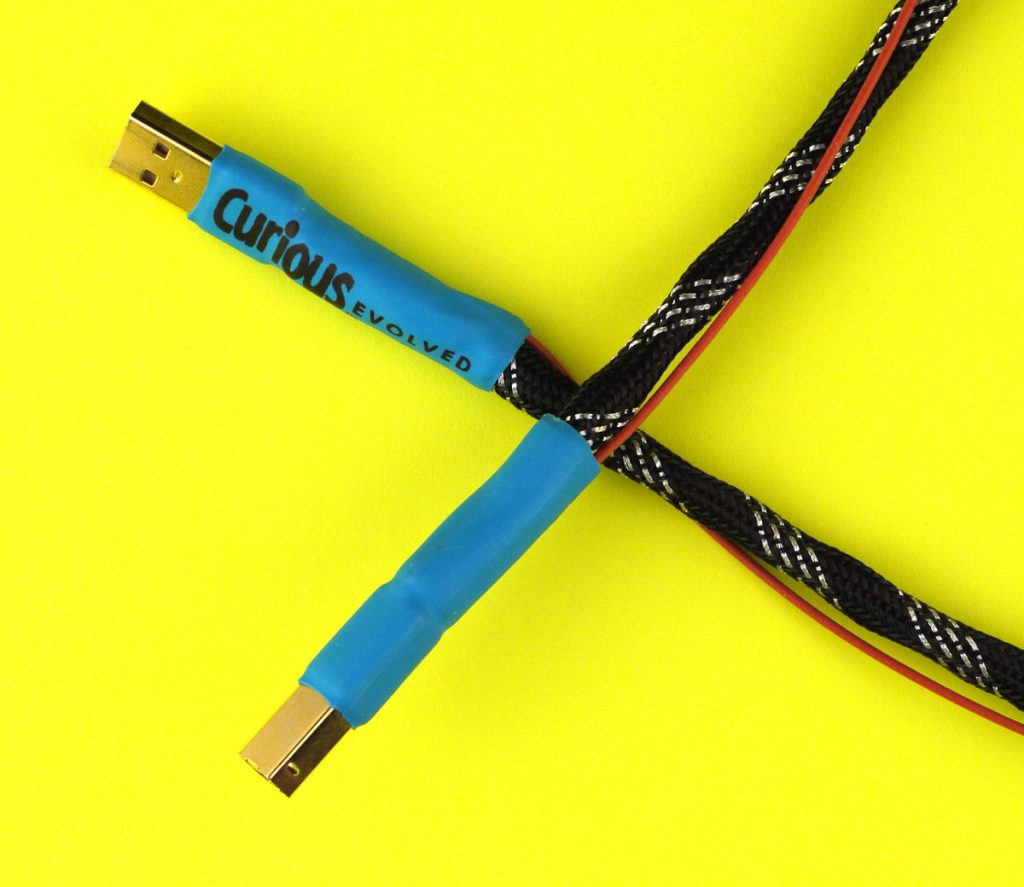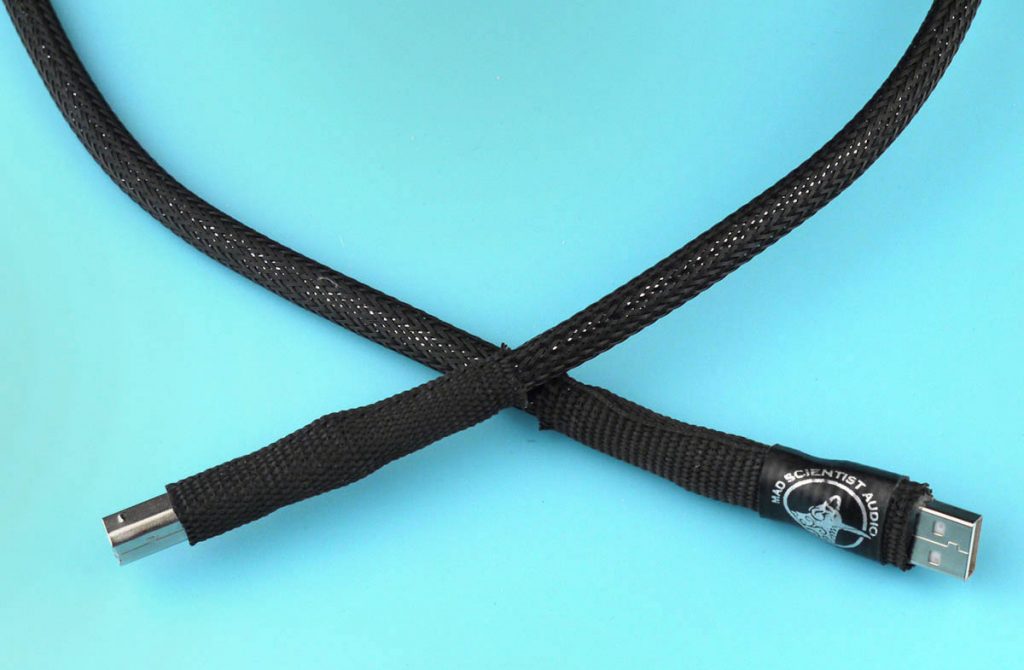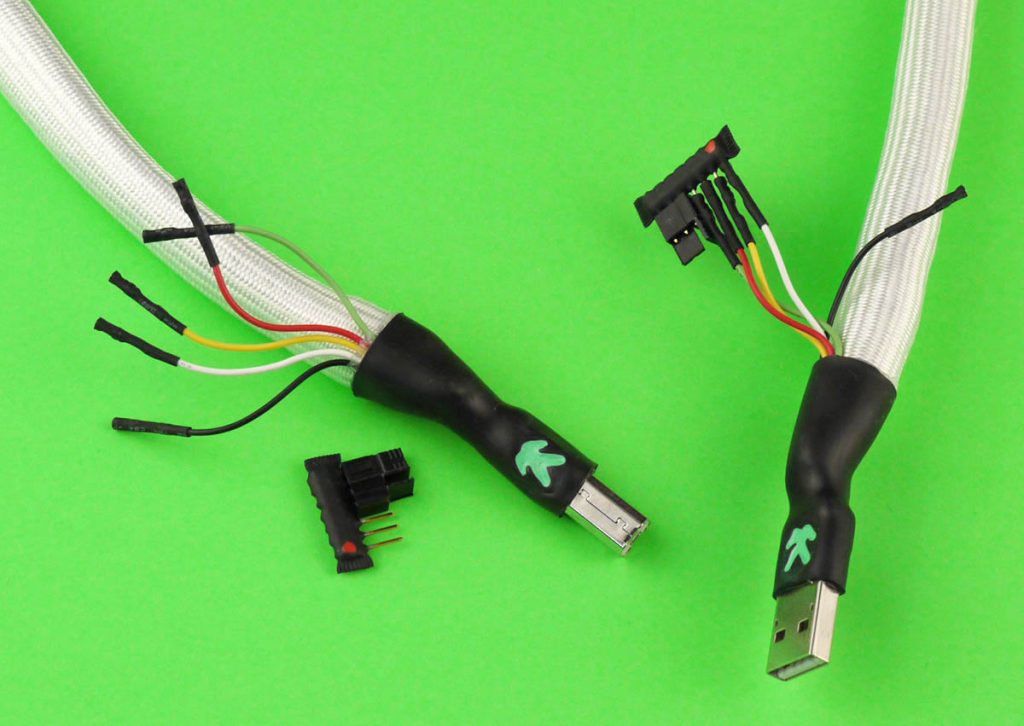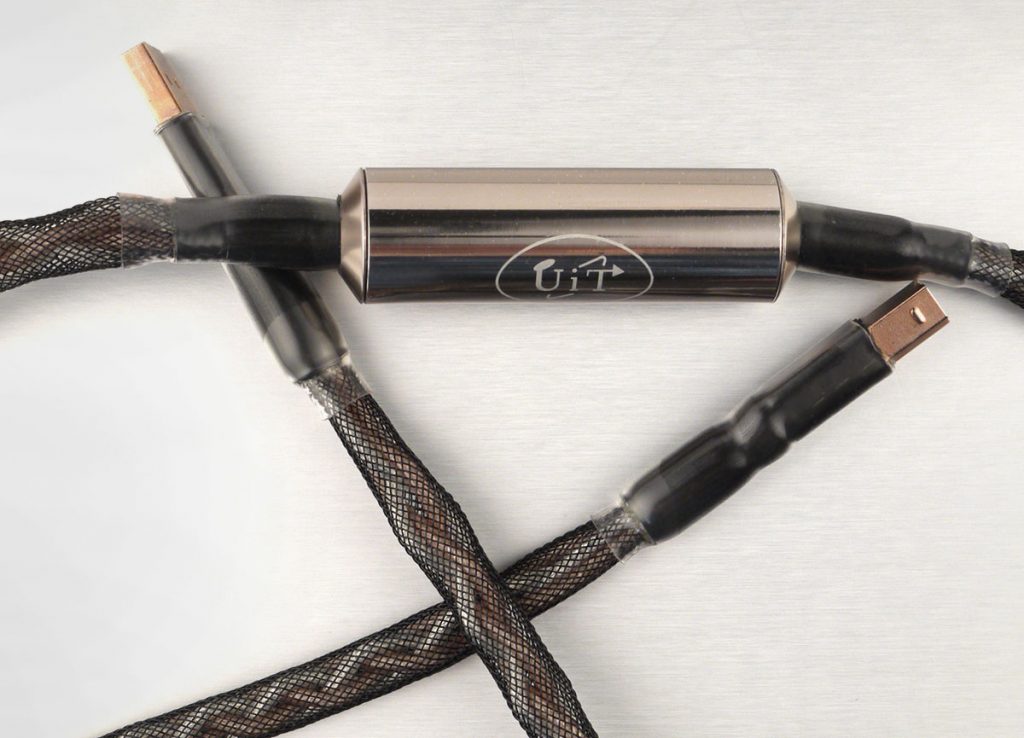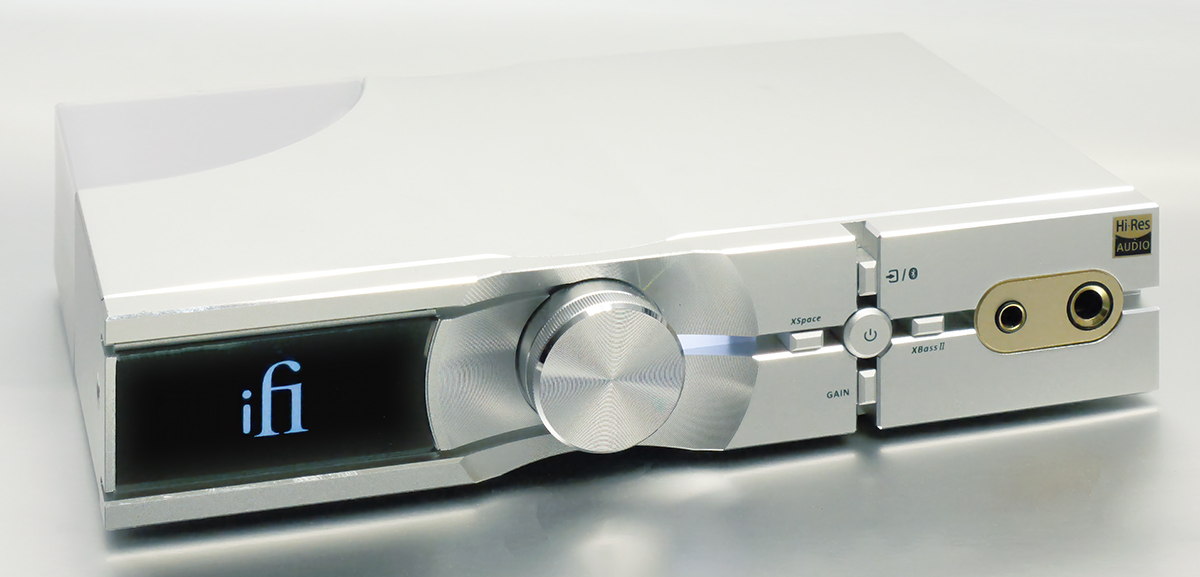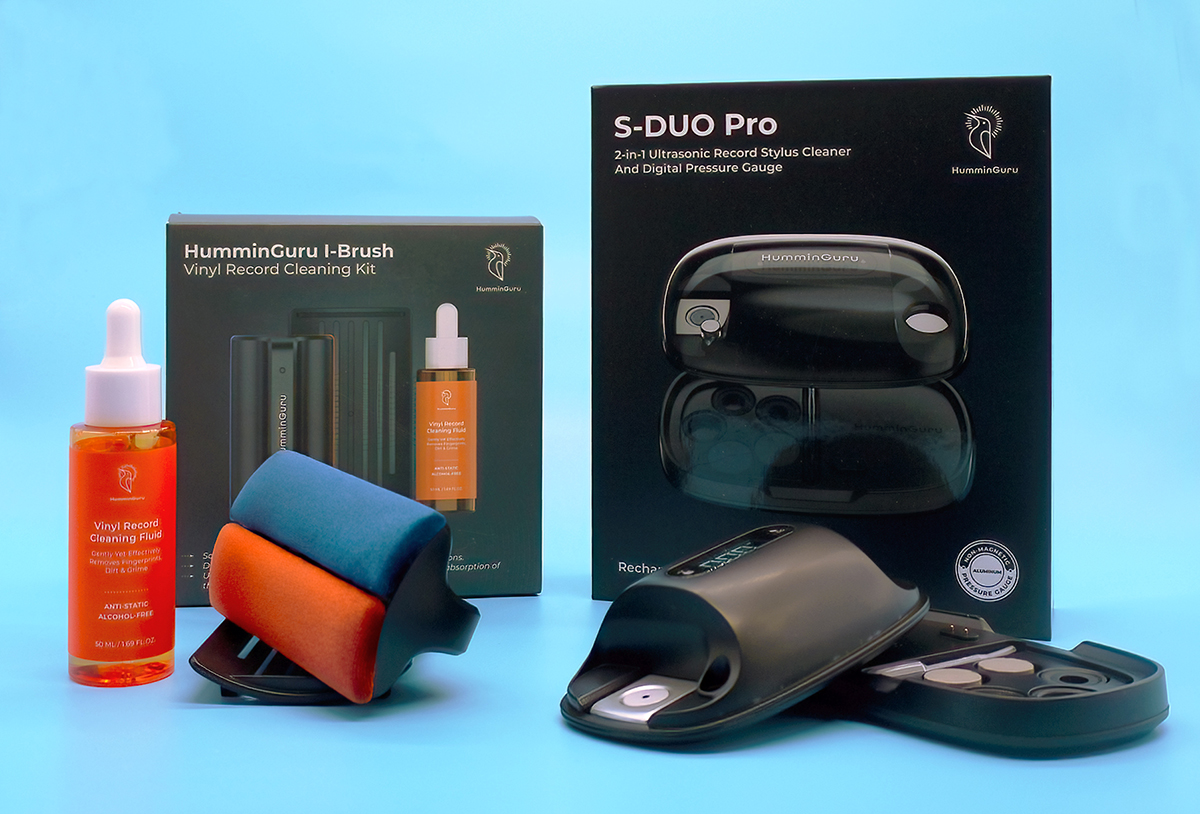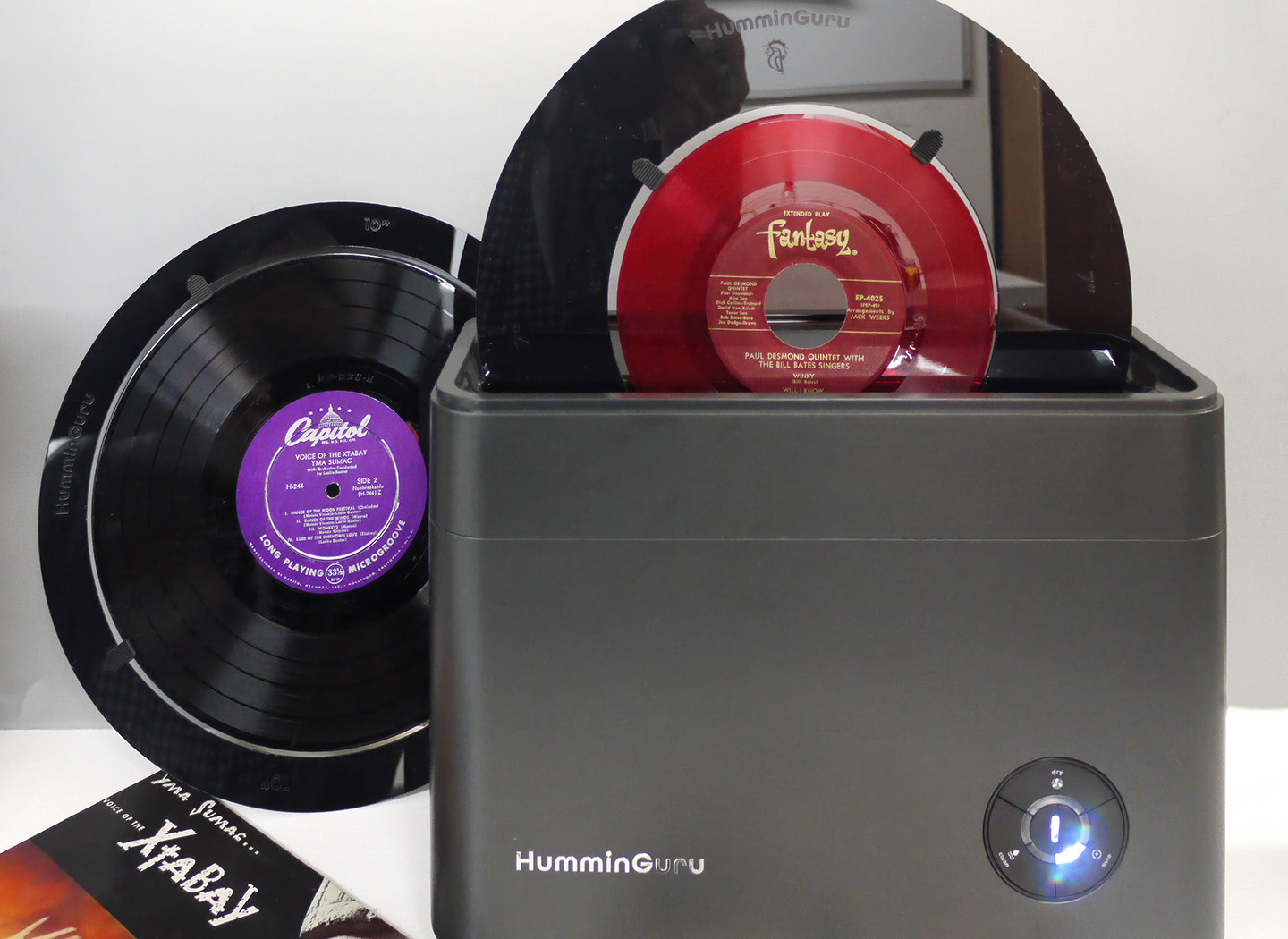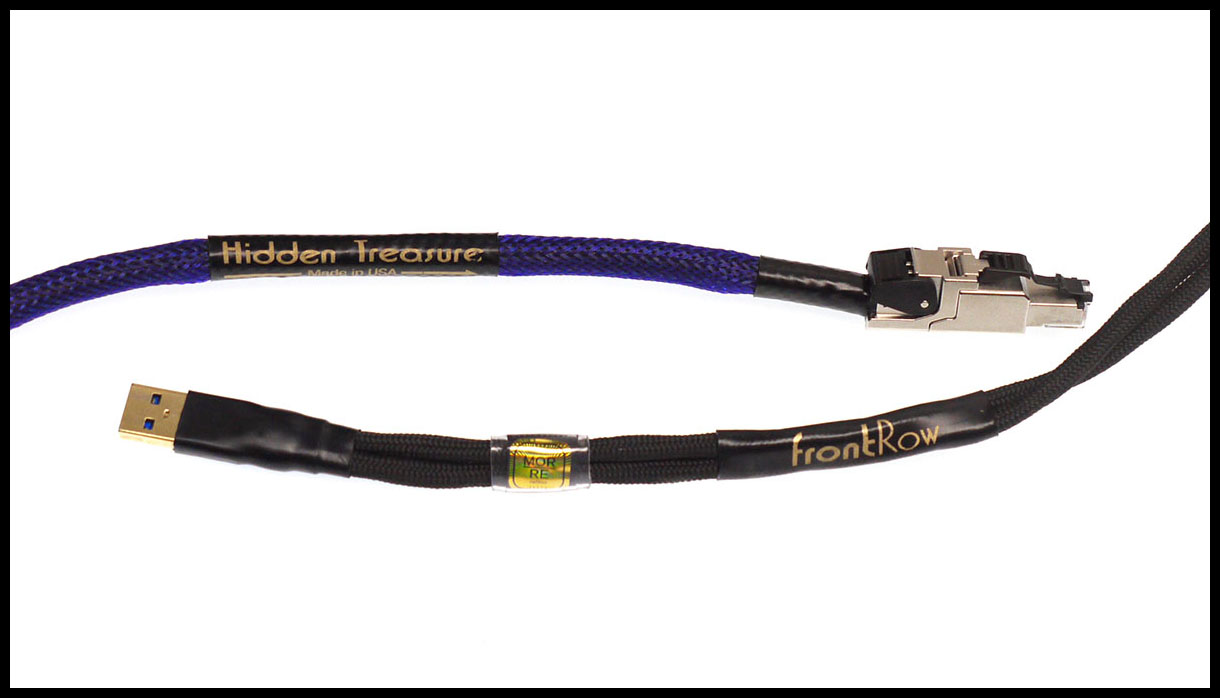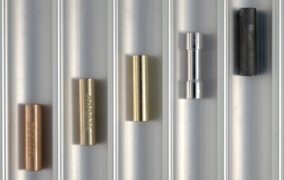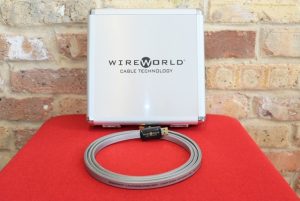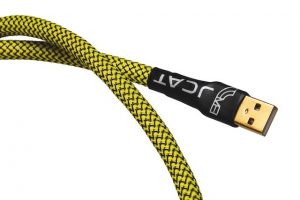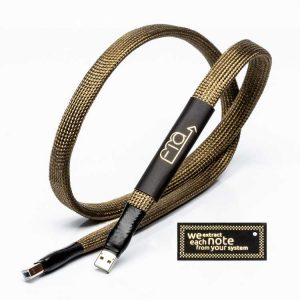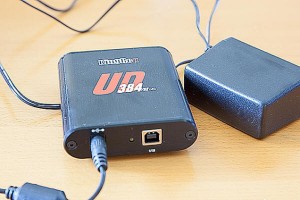Seriously? A review of four idiosyncratic USB cables? Didn't some sage audio scribe opine back in the MP-3 days that USB meant "Usually Sounds Bad"? Well, audiophiles have since embraced first High-Res downloads, and then streaming services like Tidal and Qobuz. With the result that getting the best sound from file-based audio often depends on the humble USB cable that connects the computer netherworld with the audio stratosphere. How humble? I recently read a professional review online where serious High-End gear was connected up with an Amazon Basics USB… Fortunately, bits is just bits, right?
The Universal Serial Bus standard specifies physical and electrical requirements for computer use, requiring that all USB cables must be bi-directional (to facilitate error correction—rarely a concern in audio), and include a 5v circuit to power peripherals and/or establish a "handshake" connection between devices. As USB 2 and later can transfer data at speeds far beyond the needs of CD-standard audio, higher resolution audio files are supported. Thus USB cable "sound" has become a thing, especially given the prospect that departing from the computer world's bits-is-bits-so-sounds-the-same mindset might lead to superior sound. After all, from the audio perspective, a working USB-compatible cable just needs four wires and those funky connectors, everything else is open to innovation—and you will note that none of the cables discussed here bear the otherwise ubiquitous official USB logo.
So! Let us consider four "USB" cables that would purport to sound better due to factors long familiar to audiophiles: conductor and connector quality, dielectric and shielding, alternate geometries, noise reduction, and sure, pixie dust and secret sauces. The first audio-centric USB cable I bought was the Wireworld Silver Starlight 7, a flat cable that segregated the signal and 5v conductors; it's now in Series 8 form, and available through the normal channels-along with USB offerings from the other usual well-advertised suspects. However, given the new normal of pandemic purchasing, I wanted to investigate a handful of outside-the-box designs from at least three corners of the world. Small companies, talented designers, open on-line 24/7, and shipping worldwide. I am hardly expert in file-based audio—I only started paying attention when Naxos debuted their short-lived High-Resolution classical music streaming service.
As part of setting up my dedicated listening room, I got a monthly Amazon HD Music service and started streaming to the Chord Qutest DAC from my MacBook Air, but was never totally satisfied with the results over Wi-Fi versus the excellent CD/SACD disc playback. After researching reviews and pestering more knowledgeable folks in the industry, I ended up installing a Roon Nucleus with my 2TB Seagate hard drive loaded with over 1000 CDs upstairs, connected to the router in my video setup. I ran 10m of Supra Cat 8 Ethernet cable down an HVAC vent into the basement, across a closet, through a hole I drilled in the baseboard into my listening room, then under the rug to a Sonore ultraRendu in my source equipment rack. All I needed was the optimum USB Cable between the ultraRendu and the Qutest, itself being greatly enhanced recently by replacing the stock power supply with an Uptone Audio LPS 1.2 Ultra-capacitor unit. And perhaps I could also upgrade my office desktop and workroom setups while I was at it.
Hence this project is intentionally not a cable shootout: my rooms and systems are too idiosyncratic to draw universal conclusions. The primary listening space is tiny, about 160 sq ft and less than 9' wide where the speakers sit. Think a 50's 1-car garage with a 6 1/2' ceiling. All first reflection points (sidewalls and ceiling) needed absorption panels; elsewhere, plenty of diffusion and built-in bass traps (serious bass modes from 34-250Hz). Most would consider the room over-damped. In practice, it sounds way better than the typical audio-show hotel room of similar size (remember them?). The imaging can be spectacular, 3-D not only outside the speakers, but along the sidewalls and occasionally behind the listening seat. The dipole Spatial M4 Triode Masters "load" the room in a fundamentally different manner than conventional box speakers do, so I also periodically set up my Spendor LS3/5a mini-monitors on 24" stands for near-field comparison listening. The BBC originals were designed as location monitors, have a subtly rising treble response (probably to enhance voice intelligibility), and not much to offer below the famous 110Hz bump. The later 11 Ohm Spendors like mine are easier to drive, and in my small room 8-10 watts are more than adequate for normal listening. Mini-monitor fans will know the bass gain versus imaging dance, moving speakers further / closer to the side and/or back walls. To keep a level playing field with the different cables, I stuck to my usual "rule of thirds" near-field pattern.
An Oppo 205 + D.BOB feed CDs and SACDs to the Qutest via S/PDIF. A Bent Audio TAP passive transformer-based preamp drives my current favorite amps: the Valvet 2se dual-mono single-ended solid state Class A gem and the Coincident Dynamo 34SE Mk II. 8-10 watts per channel is plenty for the 92dB, 12 Ohm Spatial M4 Triode Masters as well as the Spendors. But you are right, this is a recipe that prioritizes clarity, tone and soundstage over slam, PRaT, and volume. The small room overloads easily, and the bass can quickly get out of hand—hence my preference for "lean and clean" cables such as the Tellurium Q Ultra Silver speaker cables, the Coincident ST-10 power cords, and Unique Innovation Technology interconnects.
System 2 is my office desktop setup: Mac Mini to a PS Audio Sprout 100's internal DAC with Nordost Red Dawn cables bi-wiring Amphion Argon 2 monitors, sacrilegiously upside-down on bookshelves. I don't have a proper headphone amp, but I do use my Mr. Speakers / Dan Clark Aeon Flows with the Sprout. This room is also small, and cluttered with stuff, including bookshelves full of LPs queued up for cleaning on my VPI HW 27 or Kirmuss hot tub; a Rega Planar 3 lets me check condition. The sound is therefore clinical on purpose.
System 3 is in my workroom, much larger at about 16' x 20'. Three Macs of indeterminate vintage, scanners, shelves, and filing cabinets of negatives and prints, and an Epson P600 printer. A set-up for table-top photography, and yet more LPs on shelves. Open space, concrete floor, no acoustic treatment. My otherwise Photoshop-dedicated 27" iMac feeds an older iFi DAC, and from there to a NAD 316BEE integrated. Speakers are repurposed Martin-Logan home theater surrounds flanking the iMac. The near-field sound is quite tolerable, but of course bass-shy.
Three systems allowed me to rotate four USB cables daily, three playing continuously with the other taking a day's break before rejoining the parade so I could assess break-in. I also intentionally avoided including "de-jitter / reclocking" widgets in the cable trials, as their effects are source-dependent. While this piece is long, the four mini reviews are really initial impressions. The subtleties of any cable or component can only be fully appreciated over time when optimized in a user's own system.
And so, in alphabetical order:
The Curious Cables Evolved USB Cable "evolved" from the original Curious Cable, reviewed by Wojciech Pacuła HERE and by Dave Clark HERE. Both were designed by Rob Woodland of Australia, previously involved in the production of Keith Eichmann's ETI Bullet Plug RCA connector, and who developed the follow-on CablePod and Bayonet Plug for speaker cables. The Curious USB's signature feature was the external 5v cable, tethered at each end under yellow heat-shrink, and loosely spiraled around the signal cable. This DNA is obvious in the Evolved, but certain Sixties cineastes of a prurient persuasion will recall that I Am Curious (Yellow) was followed by I Am Curious (Blue). Inevitably, in an industry dependent on gendered hook-ups, this sequel is heat-shrunk in blue. The Yellow is still available ($350 USD for .8m, $390 for 1m), the Evolved runs $550 for .8m, $590 for 1m.
According to Woodland: "Part of the Curious philosophy is the "synergy" between ground wire and data wires. There's a special relationship going on that has a great bearing on sound quality. Further work was also carried out on the Type A and B connectors, and how the connectors interact with the wires. Again, a synergy is involved—where the right connector married to the right ground wire married to the right data lines results in real magic. In the Evolved, we've fine tuned the process—resulting in a more open and dimensional sound."
Curious also supplies custom USB cabling for Chord DACs and the Uptone Audio Regen, etc. Notably, they provide a Curious cable to connect a hard drive fitted with the USB 3 Micro B connector to a computer / streamer. Just introduced is a Curious Interconnect, sporting ETI Bullet plugs, naturally. Curious ships worldwide at no charge, but notes that due to political / pandemic realities, delivery to the USA can be delayed; a $35 DHL Express option is offered. Curious cables carry a 30-day return privilege.
Out of the box (slightly damaged in shipping), the Evolved obviously had excellent high-frequency extension and clarity, but the lower-mid to bass region was undernourished. The first 100 or so hours of burn-in partly ameliorated that, but the cable retained its extremely clean yet light balance with the Valvet amp until it had nearly 200 hours run-in, by which time the deep bass fully rolled in to match the sparkling treble and laser-cut imaging.
And by that point, switching to the Coincident Dynamo 34 SE Mk II tube amp was transformative: I was treated to perhaps the best sound I've yet heard from the little $1600 Canadian over-achiever and the Spatial M4. Actually made me wish I had a 300B amp to try.
With both the Valvet and the Coincident, the Evolved sounded a bit brighter with the LS3/5a than with the Spatials; not a surprise, and many audiophiles will like that balance. Bass was tuneful, tight, and quick. Transients were lightning fast, the midrange textured and rich. The Spatials' soundstage is huge; the Spendors only three-quarters scale, but imaging specificity with the Evolved was more precise. Less perceived depth but better sense of layering, too.
With my Mac Mini/Nordost/Amphion office desktop system the Evolved again sounded a tad bright; the Argons are literally "in-your-face" speakers (upside-down puts the metal dome tweeters at eye-level, and the ports are foam stuffed), but I used the Sprout's "bass-boost" to balance out the rising high end. On the other hand, through the Sprout headphone jack, my Dan Clark (ex-Mr. Speakers) Aeon Flow cans (normally on the laid-back side) sounded ideally detailed and well-balanced with the Aussie USB. The superb high frequency resolution of the Evolved was also apparent with the iMac/iFi iDAC2/NAD 316BEE/Martin Logan workroom set-up…but so was the treble/bass imbalance with the small mid-woofers. No worries: the NAD tone controls took care of that.
Conclusion
The Curious Cable Evolved's tonal balance may demand careful system matching to fully realize its capabilities; there's a fine line between bright and brilliant, after all, but the bass…does…evolve, and I got quite outstanding results with the tube amp and headphones. The Evolved easily revealed differences between CD quality and Hi-Res files, and deserves to be mated with electronics, cabling, and transducers with excellent high-frequency response plus mid and bass behavior that can keep up.
Mad Scientist Audio is located across the Tasman Sea from Australia, and has produced the Black Magic USB cable for a couple years now. Ostensibly named after the Kiwi Yacht that won the 1995 Americas Cup, it follows on their Heretical USB, which should give you a clue. As Chief Mad Scientist Bob Prangnell states on the website:
"…the real problem is not noise on the ground or 5V lines—it's noise that piggy-backs on the data itself. Black Magic uses innovative techniques to reduce and absorb this noise, as well as special measures to prevent its radiation from the cable. Normal USB cables are symmetrical—the path from source to DAC is the same as the path from DAC to source. But we realized that for audio, the communication from the source to the DAC was far more important. So Black Magic uses an asymmetrical data path with the aim of providing the most noise-free data signal to the DAC. Another thing that turns out to be critical is the screening. Most USB cables use a simple screening technique; Black Magic uses four different screens connected in a novel way; this prevents the cable being turned into an aerial, and also avoids pickup from other sources."
The Black Magic USB is $399 USD for any length from .8m to 2m.
Mad Scientist also offers "outside-the-box-thinking" S/PDIF, interconnect, and power cord designs, and a variety of footers and "tweaks." Plus chocolate. Mad Scientist ships worldwide (although subject to delays) and offers a 30 day return policy (perhaps not on the chocolate). My sample arrived promptly, and included a very nice piece of chocolate in a blatant attempt to bribe the reviewer.
The Black Magic is a lightweight, slender cable—visually notable only because of the fabric rather than PVC heat-shrinks. Out of the box, I felt the Black Magic had the best overall balance, top to bottom, of the cables under audition. That remained true after burn-in, although resolution, bass, and soundstage depth improved. The overall impression with the Valvet was of detailed smoothness, deep bass but no glaring departure from neutrality, with no over-emphasis on initial transients for example. One tends to listen to the music rather than sound with this cable, with less of that temptation to "get up and change something." With the Coincident driving the Spatials, I sometimes preferred the results with the more lively KT-77s over the EL34s-the choice depending on the particular recording. I consider that normal.
Switching to the Spendor LS3/5a, the Black Magic found a most congenial match with the EL 34 loaded Dynamo. Micro-dynamics were quite good—particularly noticeable were the textural components of instruments and voices, along with a happy dose of PRaT. The imaging was excellent, including the "behind the head" moments, and absolute polarity inversion was distinct. The even-handedness of the Black Magic was also apparent with the desktop system. The Nordost/Amphion combo can verge on the "ruthless," but the Kiwi Kable kept that in check; likewise, the headphones sounded smooth and engaging. In the workroom, the Mad Scientist sound happily kept the NAD's "Tone Defeat" button depressed, no trimming needed.
Conclusion
The Mad Scientist Black Magic USB cable is a classic "all-rounder," and should interface quite nicely with most tonally well-balanced systems, even those in the budget range like the Sprout and NAD, providing the ancillary equipment is sufficiently high in resolution to take advantage of its capabilities. The magic is in the details, as you can easily confirm by simply reinserting a generic USB.
The Lush ^3 USB Cable comes from Phasure, a small new company based in the Netherlands headed by Peter Stordiau. His background is in software development: everything from computer chess to networking solutions. Still active in that profession, Phasure is a sideline for this audiophile son of an audiophile.
Current Phasure products include a music-specific PC and a range of cables (listed under "Snakes & Oils" on the website), but he has also designed limited production DACs, amps, and speakers in the past. The original Lush USB was designed to sound "analog." Presumably noting the sound of the cable changed with different shielding arrangements, Stordiau introduced the Lush ^2 with 3 shields, "user-configurable" by lifting or connecting each independently to either or both terminations, and/or to each other, with each configuration resulting in a different sonic profile. The Lush ^3 adds a fourth shield, and was re-designed for better physical flexibility. Stordiau estimates there are over 2000 possible configurations with the Lush^3, and several of his other cables now also feature similar configuration options. I first encountered the Lush cables while browsing through the forums associated with the Audiophile Style (previously Computer Audiophile) before buying the ultraRendu. In a thoroughly modern fashion, Stordiau admits he doesn't fully understand the mechanisms at work, so he has "crowd-sourced" configuration recommendations through the forums, and in the process a shorthand code for any configuration was developed. In effect, Phasure is turning the "cables can't change the sound / cables are just expensive tone controls" arguments on their pointed little heads.
The Lush^3 is available in many lengths as short as .4m; 1m is priced at €285 (about $350USD at the moment), and sold only via PayPal or wire transfer. They use UPS Express shipping (figured at checkout, nominally 2 days, but...). Return window is characteristically informal, "a couple of weeks."
Unfortunately the package barely survived (during the political / pandemic slow-down). I notified Stordiau, it turns out a delivery to Connecticut had just met with a similar fate, and he is looking into improving the "bare-bones" packaging. The cable itself is thicker than the others in the group, but still flexible, and distinctly different in having multi-colored wires emerging at both ends, to be connected (or not) to plastic terminal strips. If you've gotten over the shakes from connecting the tonearm leads to a mega-buck cartridge, no problem. The cable works with no tendrils connected, but came with the leads in the "current recommendation," in Lush-speak, A: W-Y-R-G, B: W-Y-R.
Out of the crushed cardboard, first impressions were of a bass-dominated presentation soaked in ambience. After burn-in, the treble and mid-range returned, but there was still too much bass with the Valvet driving the Spatials. This is not unusual: I recently returned two highly regarded power cords because they over-emphasized bass in my room. Normally, I'd just move the speakers around to rectify things. Instead, I emailed Peter, who sent me a few Lush-speak options to try. It took a half dozen trials until I came up with a configuration that restrained the mid-bass, yet opened up the treble enough to make a go of it. (Although I'd be foolish to suggest that none of the other 2000+ possible options would sound even better.)
The result was far-and-away the most spacious sound and dramatic imaging I've heard from the Valvet amp, and those are among the German amp's prime strengths. There was still marginally too much bass with the Dynamo in EL34 mode, but the KT-77 swap brought the tube amp within shouting distance of the Valvet.
Switching to the inefficient (83 dB?) and bass-shy Spendors was a gas. OK, still no really low bass, but down to the mid-bass the little boxes suddenly sounded like mid-market Harbeths, with other-worldly 3-D imaging to boot, especially with EL34s in the tube amp. More punch with the KT-77s, though not to dance party-levels: the little guy was working hard, and I think a few more watts headroom could have been even more fun-and less worry about a clipping amp taking out a tweeter.
In the desktop system, the ^3 Lush with my provisional screen connections worked its bass and space magic with the Amphions, but the Mr. Speakers headphones sounded a little muddy. On the workroom system, the inherently bass-limited Martin Logan surrounds gained a fullness through the mid bass and an actual sense of 3-dimensional imaging despite the iMac stuck between the speakers.
Conclusion
In my own brief experience, I've heard the screen configurations change tonal balance, dynamics, imaging, and ambience. Because I stuck with just the one configuration for the review, results ranged from superb to disappointing. Okay, so there's probably a Lush scheme or seventy-three to rectify any shortfall, but that will have to wait until after this review. Meanwhile, if you enjoy tinkering with your system, the Lush^3 will have you in heaven; if you are a purchase, plug, and play person, the other place.
The only domestic product in this survey, the Perfect Music Purifier USB cable from Unique Innovations Technology was reviewed HERE by my esteemed colleague Robert H. Levi, as one of a series of enthusiastic reviews of UIT's products. As with their other line-level products, the UIT USB cable is a 4-way braid of 2-each stranded and coaxial silver-plated OFC copper wire, and features a mysterious central pod. Mitch Ko, UIT's owner / designer explains the pod module is a solid state circuit made of pure silver wire plus components. As applied in the USB cable, the PMP technology aims to isolate and eliminate noise caused by the electronic ground circuit connection, the power supply, and the shared connection between left and right music channels (crosstalk) through proprietary circuit designs utilizing concepts drawn from the fiber optic technologies he previously worked with.
Both braided geometry and coaxial designs also inherently reduce RFI interference, so no conventional shield is employed other than an open protective mesh, and the cable remains flexible. UIT also includes a USB C to A adapter to accommodate recent devices (such as my MacBook Air), but universal USB C functionality is not guaranteed.
The UIT PMP USB is available only direct, 1m for $590USD, with free shipping throughout the USA, and 30-day return window.
I was eager to include the UIT USB here because, based on Bob Levi's reviews and description of the RFI noise reduction technology, I had purchased a 6m pair of UIT interconnects a while back. (The preferred long-run approach is to use shielded XLR cables, but my amplifiers were RCA only). I was so pleased with the performance I added a couple short sets for source components. The UIT's order page is not set up for custom lengths, but [email protected] will help explain the procedure.
The UIT arrived promptly, kitted out as their other cables were, in a Tiffany blue satin bag inside a royal blue velvet bag inside a plastic baggie. The cable appears identical to their interconnects except for the USB plugs, which are an unusual rose gold color.
I should note here that my Chord Qutest DAC is connected by short UIT interconnects to the preamp, from there via the 6m set to the amps, and then to Tellurium Q's Ultra Silver speaker cables ("distinctive from the Black range by focusing even more on detail"). Speaker and listening positions, tweaks and acoustic treatments etc., had been set up with the UITs, the "TQs" and the Valvet amp in place so as to sound "right" to my taste with LPs, CDs, and SACDs. To avoid bias, I ran some USB tests with the Tellurium Q and Wireworld interconnects that the UITs had replaced; while my opinions of the USB cables' performance were basically unchanged, all sounded better with the UIT interconnects. That does not mean replacing those with interconnects from the other three vendors might not be similarly synergistic.
Out of the bags, the UIT USB cable sounded a bit upper-mid forward. After the 100+ hours burn-in, it was tonally balanced, and particularly detailed and articulate from top to bottom, with truly excellent PRaT, dynamics, ambience, and spatial presentation with the Valvet and the Spatial M4s. For me, articulation is a combination of resolution, tonality, and clean transient attack, and the UIT excels at all three. Having used several Kimber Kables over the years, I knew how alive and dynamic an unshielded braided conductor can sound. The braided UIT USB contributed particularly expressive vocal / instrumental micro-dynamics to the mix—I presume the noise reduction technology of the module also has a lot to do with the open, transparent, "blacker black between the notes" result.
Compared to the solid-state Valvet, the Coincident's EL 34s brought some tube warmth to the party without sacrificing much of the "jump factor." That was particularly true when the Spendors replaced the Spatials. The inefficient, often reticent, sealed box British LS3/5a's really came alive with just 8 (good) tube watts and the UIT USB.
In the office desktop system, the Amphions' inherent clarity and balance was apparent with the UIT feeding the Sprout 100's DAC (no other UIT Cables involved here, just the Nordosts). The Aeon Flow cans sounded luscious but fully detailed, especially through the mid-range. In the workroom system, the UIT USB brought some welcome added life to the Martin Logan surrounds' small mid-woofers. No complaints, other than the recurring temptation to stop work and just listen, even with MP-3 quality Internet radio.
Conclusion
Granted, my main system had been carefully assembled to sound "right" with just the UIT interconnects, and adding the UIT USB only extended that perception. But the UIT USB should work just as well in any well-balanced high-end system, and particularly computer-direct-to-DAC setups like my office and workroom systems where cable-borne noise (including RFI far above the audible range) is suspected or known to exist.
Of course, there are lots of experts who know that digital cables can't have a "sound"; they either work or they don't, and only an audiophool would spend more than $5 on one. But these "USB" cables do sound different because they are designed and voiced and constructed differently (just like power cords, interconnects, and speaker cables are). Duh. All four are excellent, but each "sounded" at its best in a different system or setup and with different repertoire—all in my basement. Like I said, this was not a shootout. It's horses for courses, as the Brits would say.
In networked digital audio, the USB cable is the last crucial but easily exchanged element in the chain before the DAC; in that respect I'd compare it to cartridge choice before the phono stage in the analog realm. Many are the times I've wished I could afford to keep up-market Koetsu, Ortofon, and Lyra cartridges on hand, just to swap them on impulse like some other reviewers can. Yes, I know there are USB cables that cost as much as a premium cartridge—but I've intentionally kept this survey to cables well under the $1K price point. Frankly, and just "doing the numbers," sub-$1k audiophile-quality USB cables are undervalued in the market for the benefits they accrue. So yes, I can probably afford two, three, four USB cables, and swap them around my systems without ever having to even adjust VTA or take out a second mortgage.
At this point, a sophisticated high-end audio reviewer will inevitably run out of adjectives and indulge in metaphor to reinforce their findings: expensive cars and vintage wines seem to be the default analogies. I know very little about either, so I'll go with a different market metaphor:
The Mad Scientist Black Magic is Organic Milk from grass-fed cows, not factory farms. What milk should taste like.
The Curious Cable Evolved is Kefir, cultured, probiotic, with a curiously satisfying tang.
The UIT Perfect Music Purifier is Muscle Milk, no cows involved, lactose free but extra protein.
The Phasure Lush^3 is Buttermilk, Goat's Milk, Almond Milk, or Chocolate Milk. Life is full of difficult choices, so have it your way.
That Amazon Basics generic computer USB cable? Reconstituted evaporated milk powder. Bits is bits, right?
For the music Bruce listened to for this review, go HERE.




